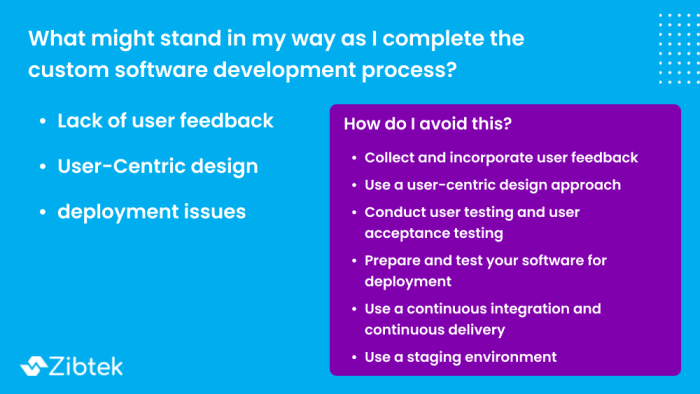In today’s rapidly evolving technological landscape, businesses of all sizes are increasingly reliant on custom software solutions to streamline operations, enhance efficiency, and gain a competitive edge. While outsourcing software development offers numerous benefits, choosing the right approach is crucial. Nearshore custom software development presents a compelling alternative to offshore outsourcing, offering a blend of cost-effectiveness and proximity advantages.
This comprehensive guide delves into the intricacies of nearshore software development, exploring its benefits, challenges, and considerations for businesses seeking to leverage this powerful approach.
Understanding Nearshore Software Development
Nearshore software development refers to outsourcing software development projects to a country geographically closer to your own. Unlike offshore outsourcing, which involves working with teams in distant locations like India or the Philippines, nearshore development typically involves partnering with companies in neighboring countries or regions with similar time zones and cultural contexts. This proximity offers significant advantages in terms of communication, collaboration, and project management.
Key Advantages of Nearshore Development
- Reduced Time Zones Differences: Collaborating with a nearshore team often means working within a similar time zone, facilitating real-time communication and quicker response times. This minimizes delays and streamlines the development process.
- Improved Communication and Collaboration: Geographical proximity simplifies communication, allowing for more frequent and effective interactions between your in-house team and the development team. This fosters better understanding, reduces misunderstandings, and promotes a more collaborative environment.
- Cultural and Linguistic Similarities: Nearshore partners often share similar cultural values and languages, minimizing potential communication barriers and fostering a smoother working relationship. This reduces the risk of misinterpretations and cultural clashes.
- Cost-Effectiveness: While not as drastically cheaper as offshore outsourcing, nearshore development still offers significant cost savings compared to in-house development, especially for smaller to medium-sized businesses.
- Easier Travel and On-site Visits: The proximity of nearshore teams allows for easier and more cost-effective travel for meetings, workshops, and on-site visits, enhancing collaboration and project oversight.
- Stronger Intellectual Property Protection: Working with a nearshore partner within a similar legal framework can provide stronger safeguards for intellectual property rights compared to offshore locations.
Choosing the Right Nearshore Partner
Selecting the appropriate nearshore development partner is paramount to the success of your project. Consider the following factors:
Key Considerations When Selecting a Nearshore Partner:, Nearshore custom software development
- Technical Expertise: Assess the partner’s proficiency in the specific technologies and programming languages required for your project. Review their portfolio and client testimonials to gauge their expertise.
- Experience and Track Record: Look for a partner with a proven track record of successful projects, particularly those similar in scope and complexity to your own. Examine their case studies and client references.
- Communication and Collaboration Skills: Effective communication is vital. Evaluate the partner’s responsiveness, clarity, and willingness to collaborate throughout the development process.
- Project Management Methodology: Ensure the partner utilizes a robust project management methodology (e.g., Agile, Scrum) that aligns with your project requirements and ensures transparency and accountability.
- Security and Data Protection: Verify the partner’s commitment to data security and compliance with relevant regulations (e.g., GDPR, CCPA). Inquire about their security protocols and certifications.
- Contractual Agreements: Thoroughly review the contractual terms, including intellectual property rights, payment terms, and dispute resolution mechanisms.
- Company Culture and Values: Assess the partner’s company culture and values to ensure alignment with your own organizational principles.
Nearshore Development vs. Offshore Development vs. In-House Development
Understanding the differences between nearshore, offshore, and in-house development is critical for making an informed decision. Each approach presents unique advantages and disadvantages:
| Feature | Nearshore | Offshore | In-House |
|---|---|---|---|
| Cost | Moderate | Low | High |
| Time Zone Difference | Minimal | Significant | None |
| Communication | Excellent | Challenging | Excellent |
| Cultural Differences | Minimal | Potential for significant differences | None |
| Control | High | Moderate | High |
| Intellectual Property Protection | High | Moderate | High |
Popular Nearshore Locations
Several regions are emerging as popular nearshore destinations for software development:
- Latin America (Mexico, Costa Rica, Colombia): These countries offer a blend of skilled developers, favorable cost structures, and relatively close proximity to North America.
- Eastern Europe (Poland, Ukraine, Romania): These regions boast a strong talent pool, competitive pricing, and a shared European cultural context.
- Canada: For US-based companies, Canada offers a seamless nearshore option with minimal cultural and linguistic barriers.
Frequently Asked Questions (FAQ)
- Q: What are the biggest challenges of nearshore software development?
A: While offering many advantages, challenges can include managing cultural nuances, potential language barriers (even within similar languages), and ensuring consistent communication across time zones (though often minimized compared to offshore). - Q: How do I find a reputable nearshore software development company?
A: Thorough research is crucial. Look for companies with proven track records, positive client reviews, and strong technical expertise. Check online directories, review platforms, and request references. - Q: What is the typical cost of nearshore software development?
A: Costs vary depending on factors like project complexity, team size, and the location of the nearshore partner. Generally, it’s more expensive than offshore but less than in-house development. - Q: How can I ensure effective communication with my nearshore team?
A: Establish clear communication channels (e.g., project management software, regular video calls), define roles and responsibilities, and use a common language for documentation and communication. - Q: What are the legal considerations for nearshore software development?
A: Ensure your contracts clearly define intellectual property rights, payment terms, confidentiality, and dispute resolution mechanisms. Consult legal counsel specializing in international contracts.
Conclusion
Nearshore custom software development offers a compelling solution for businesses seeking to balance cost-effectiveness, quality, and collaboration. By carefully selecting a reputable nearshore partner and establishing clear communication protocols, companies can leverage the benefits of this approach to build high-quality software solutions that drive growth and innovation. Remember to thoroughly research potential partners, consider your specific needs, and prioritize effective communication throughout the development lifecycle.
Call to Action
Ready to explore the advantages of nearshore custom software development for your business? Contact us today for a free consultation and let us help you find the perfect nearshore partner to bring your software vision to life.

Source: zibtek.com
Popular Questions: Nearshore Custom Software Development
What are the key differences between nearshore and offshore development?
Nearshore development involves outsourcing to a nearby country, minimizing time zone differences and travel costs, while offshore development uses teams in geographically distant locations.
How can I ensure the quality of nearshore development services?
Thorough due diligence is crucial. Look for providers with demonstrable experience, strong client testimonials, and a clear quality assurance process. Regular communication and project milestones are also essential.
What are some common challenges associated with nearshore development?

Source: cronj.com
Potential challenges include language barriers (though often less pronounced than with offshore), cultural differences requiring careful management, and the need for robust communication strategies to maintain project momentum.

Source: lvivity.com
What types of projects are best suited for nearshore development?
Projects that require frequent communication and collaboration, such as agile development projects, often benefit greatly from the proximity afforded by nearshore teams. Projects with tight deadlines or those needing quick iteration cycles are also strong candidates.
